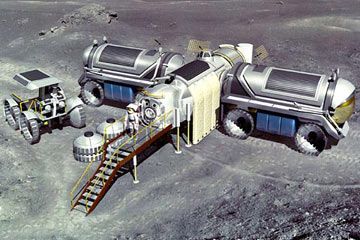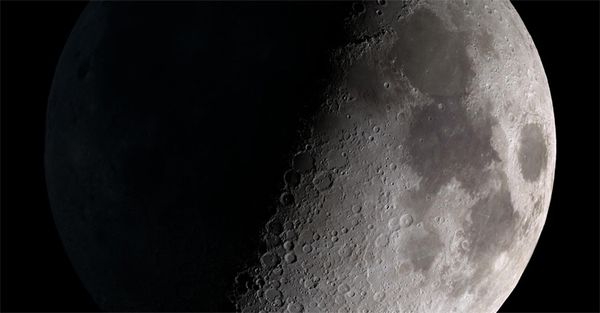The universe is a place of limitless perspectives. Just as we observe lunar phases from our houses and backyards, an astronaut standing on the near side of moon would see planet Earth wane and wax. This Earth phase cycle stands in direct opposition to the lunar phases everyone's familiar with. For example, if the lunar astronaut we just mentioned went stargazing on the night of a full moon, our blue planet would be almost completely dark.
Conversely, when Earth looks "full," it dramatically brightens the nighttime lunar surface on the moon's near side. You may know that moonlight is nothing more than sunlight reflected off that satellite's surface. Well our planet reflects sunlight in much the same way. As a matter of fact, a "full Earth" looks 43 to 55 times brighter on the moon than a full moon does on planet Earth.
Earthshine is the name given to sunlight that has bounced off the deserts, clouds and icecaps of the blue planet we call home. You don't need to put on a spacesuit — or buy a telescope — to see this phenomenon in action. During the crescent moon phase, a C-shaped sliver of the lunar surface is brightly lit. Yet you may also notice that the rest of the moon is faintly visible to the naked eye as well. That visibility is made possible by good old earthshine.
Earth's reflected sunlight usually keeps things nice and bright on the near side of the moon, regardless of whether it's daytime or nighttime up there. Indeed most nights on this part of the moon are much brighter than nighttime is anywhere on our home planet. (However, the near side of the moon's surface does become noticeably darker during lunar eclipses.)
And get this: Since the satellite doesn't have an atmosphere, stars are always visible from both sides of the moon, even when the sun is out. Of course, as the moon rotates around its axis and orbits Earth, different stars pop into view across the sky. Yet when viewed from the moon, the stars would not appear to twinkle. Twinkling — also known as "astronomical scintillation" — is a light illusion caused by Earth's atmosphere. With no Earth-like atmosphere to interfere with starlight, the stars do not twinkle on the moon.
Who knows? Maybe someday soon, moon-based settlers will get to bask in the radiant light of a full Earth on a star-filled lunar night. They'll just want to bundle up before heading outside.



